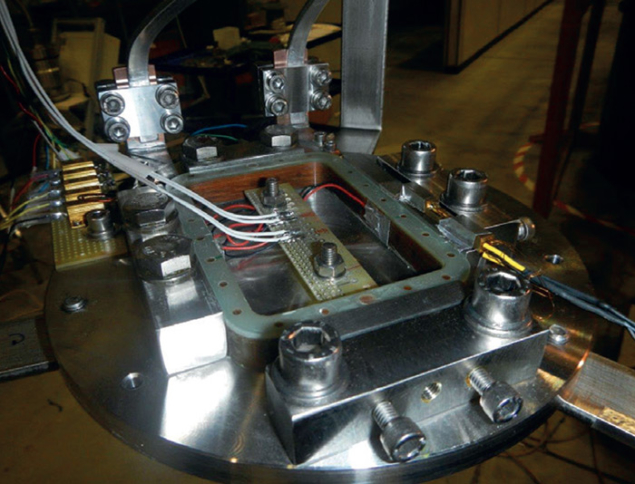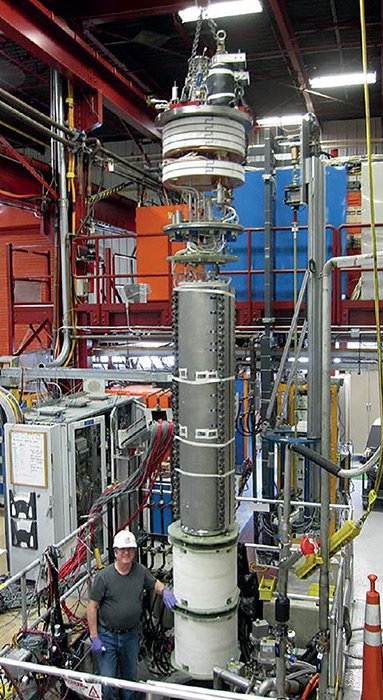
Image credit: G Volpini/LASA.
The design study for the High-Luminosity LHC (HL-LHC) project is now approaching completion. The conceptual design is completed for most of the magnets, engineering is in progress, and the first hardware that will be used in the prototypes is being manufactured and tested. Recent months have seen successful tests of some of the magnets that will be essential for this high-luminosity upgrade (CERN Courier March 2015 p28).
The interaction regions of the HL-LHC will contain nine different types of new magnets, relying on three different technologies – Nb3Sn and Nb-Ti superconductors in the form of Rutherford cable, and super-ferric magnets with Nb-Ti coils. These magnets are in the design and prototyping phase, being developed internationally by the US LHC Accelerator Research Program (US-LARP), the CIEMAT Research Centre in Spain, CEA Saclay in France, the INFN-Milano LASA laboratories and INFN-Genova in Italy, and KEK in Japan.

Image credit: G Chlachidze/US-LARP.
In April, the winding and impregnation of the first coil of the superferric sextupole corrector was completed and successfully tested as a stand-alone coil in the INFN-LASA laboratories. The coil had a first quench at 80% of the short-sample limit – the maximum field achievable in the magnet – and reached 91% after three quenches at 2.5 K. In these correctors, the operational current is set at 60% of short-sample limit. This was the first test of a component of the HL-LHC interaction-region magnets, with an operational peak field in the coil of 2.3 T.
In May, the first coil for the Nb3Sn short quadrupole model, manufactured by the US-LARP collaboration, was tested in a mirror configuration at Fermilab. The coil had a first quench at 70% of the short-sample limit, a second one at 76%, and reached 90% after 20 quenches. The triplet will operate at 75%, with a peak field of 11.5 T – a value that has been recently reduced from the original 80% to add some margin, following the advice of a review committee held at CERN in December.
Since the beginning of the year, coil-winding tests have been under way, both at KEK, for the 5.6-T Nb-Ti separation dipole (D1), and at Saclay, for the 115-T/m-gradient Nb-Ti quadrupole. An iteration of the design of the iron yoke was performed at KEK to guarantee a better alignment of the dipole field during assembly. At Saclay, the first tests have confirmed the correct geometry of the end spacers and of the coil components.
The next step is testing of the first Nb3Sn quadrupole short model this coming autumn. This is made up of two CERN coils, which have recently been shipped to the US, and two LARP coils. A test of the first corrector sextupole is foreseen in LASA at the end of the year, and a test of the first short model of the separation dipole will be carried out at KEK.
• Based on an article in acceleratingnews.web.cern.ch.





